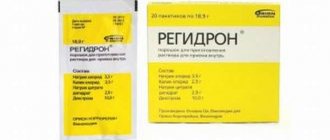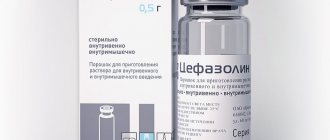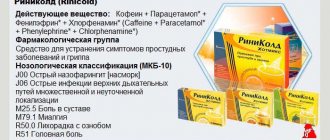Papaverine is an analgesic drug widely used in medicine. It is available in various forms and is therefore prescribed to patients individually, depending on the sensitivity of the body. Indications for the use of the drug Papaverine may be different, which is why its method of administration differs. Thus, for inpatient treatment, injections are used; for self-treatment, tablets and suppositories are allowed.
Pharmacological action of the drug
What is Papaverine? What is the product used for? Is it an antibiotic or not?
Papaverine is an opium alkaloid and is a myotropic antispasmodic. The drug is not an antibiotic. The active ingredient Papaverine suppresses the activity of phosphodiesterase, promotes the accumulation of adenosine monophosphate and a decrease in calcium levels in the blood, which ultimately leads to the relaxation of the smooth muscles of the respiratory, excretory, and reproductive systems, as well as the dilation of arterial vessels and improved blood circulation. The drug has sedative (calming) and analgesic properties, relieves various types of muscle and vascular spasms, reduces the excitability of the heart and helps lower blood pressure. Does not have any particular effect on the nervous system.
Storage
The drug Papaverine should be stored in a dry place at a temperature that will not exceed 25°C. The medicine must be kept away from children and pets.
If all conditions are met, the medicine can be stored for 2 years . After the expiration date, taking this product is prohibited.
What does Papaverine help with? Indications for use
Papaverine hydrochloride, being an antispasmodic that also has anticonvulsant and hypotensive effects, is prescribed for:
- Decreased tone of smooth muscles of the respiratory and excretory systems, as well as the heart;
- Providing a calming effect;
- Dilation of blood vessels;
- Eliminate problems with blood vessels located in the brain;
- Improves blood circulation;
- Relieving spasms of the abdominal organs, namely colitis, cholecystitis and pylorospasm;
- Elimination of hypertensive crisis;
- With renal colic;
- Relieving spasms due to difficulty urinating;
- Relief of bronchospasms during bronchitis;
- Treats inflammation;
- When coughing;
- For angina pectoris.
Having a special formula, the drug is absorbed in a short time and begins to act within half an hour. Papaverine is excreted in the urine through the kidneys.
If there is an urgent need to immediately remove the drug from the body, they resort to dialysis. With its help, harmful substances and toxins are removed from the blood.
Papaverine is used during surgical operations. The anesthesiologist administers a drug to reduce muscle tone in the airways. This helps the patient tolerate anesthesia more easily.
Papaverine during pregnancy
Most pregnant women have encountered such a problem as uterine tone. This phenomenon is dangerous because it can provoke premature termination of pregnancy or childbirth. Also, with hypertension, blood flow to the fetus is disrupted, which can lead to bad consequences. The fetus ceases to receive the nutrients and elements necessary for its development. To eliminate this problem, gynecologists often prescribe the drug Papaverine, which also lowers blood pressure when it may increase. You should check with your doctor at what pressure you can take the drug. Papaverine helps restore blood flow to the uterus, which has a positive effect on the development of the fetus.
Having a sedative effect, Papaverine reduces the nervous tension that so often accompanies pregnant women and increases the tone of the uterus.
Papaverine suppositories are widely used in gynecology for rectal administration. The active substance of Papaverine, when administered rectally, is quickly absorbed into the blood and saturates the muscles of the uterus in full in a short time.
Taking Papaverine during pregnancy may lead to side effects, namely:
- Allergy to the components of the drug, manifested in the form of skin itching (most often urticaria);
- Drowsiness;
- Dizziness;
- Constipation, stomach may swell;
- Heartbeat disturbances when the drug is administered intravenously.
If you feel worse from Papaverine, you should stop taking the drug and consult your doctor.
Interaction
Platiphylline is an antispasmodic, vasodilating, sedative agent, that is, its pharmacological properties are close to Papaverine. Medicines differ only in the mechanisms of therapeutic action, therefore Platyfillin with Papaverine are used in the combined conservative treatment of spastic syndromes, hypertensive crises and other pathological conditions.
No-spa with Papaverine, like Platiphylline, interact well, exerting a synergistic therapeutic effect on the smooth muscle elements of the human body. This combination of pharmaceuticals is especially common in obstetric and gynecological hospitals when there is uterine tone, the threat of spontaneous miscarriage, or excessively active early labor.
In medical publications on neurological topics, there is news that the effectiveness of Levodopa is significantly reduced in combined conservative therapy, for which the use of Papaverine in tablets or in the form of an injection solution against the background of drug treatment of Parkinson’s disease is contraindicated.
The simultaneous use of Papaverine with anticholinergic drugs may result in an increase in the therapeutic effects of the latter, therefore, if their combined use is necessary, dosage reduction or temporary withdrawal of pharmaceutical drugs should be discussed with a qualified specialist.
Contraindications to taking Papaverine
Papaverine is not recommended for use if you are hypersensitive to the active substance or components of the drug in order to avoid allergic reactions. If signs of allergy appear, treatment should be stopped.
According to the instructions for use, Papaverine is contraindicated:
- Children up to six months;
- To old people;
- Comatose patients;
- For chronic low blood pressure;
- If there is AV block;
- For glaucoma;
- In case of intolerance to the components of the drug;
- In case of severe liver failure.
Papaverine can be taken with extreme caution:
- With prostatic hyperplasia;
- In case of chronic renal failure;
- With supraventricular tachycardia;
- After suffering a traumatic brain injury;
- For hypothyroidism;
- If the functioning of the adrenal glands is impaired;
- In stressful situations.
Taking Papaverine is not compatible with drugs from the pharmacological group of monoamine oxidase enzyme inhibitors. Also, during treatment with Papaverine, it is strictly forbidden to drink alcohol.
Composition and release form
The main active ingredient for all forms is papaverine hydrochloride.
The drug can be found in the following forms:
- injection;
- pills;
- suppository for rectal administration.
The tablets contain the following auxiliary components: sugar, potato starch, talc, stearic acid.
In the solution intended for injection, the excipients are: D, L-methionine, purified water, disodium edetate.
Rectal suppositories contain: hard fat, emulsifier No. 1, cosmetic stearin.
How to take Papaverine correctly? Mode of application
Papaverine tablets are taken orally up to 4 times a day.
The dosage of the drug for adults is 40-50 mg at a time. The pediatric dose of Papaverine in tablets is set depending on age: children from 6 months to 2 years are prescribed a dose of 5 mg, from 3 to 4 years - 5-10 mg, from 7 to 9 years - 10-15 mg, from 10 to 14 years – 15-20 mg of the drug. The drug can be taken both before and after meals. Papaverine is also available in capsules. Methods of administering the drug by injection are different. Papaverine solution for injection in ampoules is administered intramuscularly and subcutaneously up to 4 times a day in the amount of 1-2 ml per application. Intravenous use of the drug is allowed. Before giving injections, Papaverine Hydrochloride injection is diluted with a 0.9 percent solution of sodium chloride. Injectable Papaverine is used in the complex treatment of colds and to reduce body temperature. To do this, Papaverine is mixed with Analgin and Diphenhydramine.
Papaverine ointment or gel is prescribed for complicated hemorrhoids accompanied by anal bleeding. Papaverine suppositories can only be taken by adults 3 times a day, 20-40 mg. Papaverine Light spray has a lighter effect.
The course of treatment can range from several days to 3 weeks. In what form and for how long Papaverine can be used is determined by the attending physician.
How long does it take for Papaverine to work? The drug is absorbed more quickly when administered intravenously.
Papaverine suppositories also act quickly, giving the desired effect within a few minutes. Pregnant women are prescribed a Papaverine drip in order to preserve the fetus. The duration of treatment during pregnancy is determined by the attending physician.
An overdose of Papaverine causes general weakness, drowsiness, and also reduces blood pressure. Due to the rapid absorption of the drug, an overdose can cause severe poisoning and even death.
Packaging and appearance
The tablets are snow-white, round in shape. Upon contact with the receptors of the tongue, they transmit a bitter taste. They have no smell. The drug for systemic treatment orally is packaged in plastic blisters of 10 pcs. The cardboard package contains 5 blisters. Companies that package papaverine in paper blisters allow individual releases of 1 blister.
Rectal suppositories are packaged in 5 pieces in an aluminum or plastic blister. Each cardboard box contains 10 candles (2 blisters). Suppositories are white, may have a yellowish tint. They are narrowed at one end, which facilitates insertion into the rectum.
The solution for intravenous administration is transparent, colorless. Packaged in glass ampoules, each with a volume of 2 ml.
Description of side effects
On the part of the cardiovascular system, heart rhythm disturbances are possible due to atrioventricular block, when impulses between the atria and ventricles slow down or completely stop. At the same time, tachycardia and decreased blood pressure may occur.
From the digestive system there is:
- Nausea;
- Bloating;
- Impaired movement of food in the intestines;
- Constipation and diarrhea may also occur.
The list of side effects may also include allergic reactions, eosinophilia, drowsiness and excessive sweating. Side effects after taking the drug are quite rare. In most cases, they are observed during self-treatment without consulting a doctor and exceeding the dosage of the drug.
What to replace the drug with? Papaverine analogues and price
No-shpa is an analogue of Papaverine.
There are a number of drugs similar in composition and action to Papaverine. Analogues of Papaverine, which have an identical antispasmodic effect, are Paraverine and No-shpa (aka Drotaverine Hydrochloride), Spasmol. They can be used during pregnancy, for patients in urological and proctological hospitals, and in pediatric practice for children. The drugs have a quick analgesic effect to relieve headaches.
Depending on the form of release, Papaverine can be purchased at the following prices:
- In tablet form – 16 rubles;
- In injection form, Papaverine costs 45 rubles per pack of 10 ampoules;
- The price of candles reaches 70 rubles.
special instructions
If there are indications for the use of Papaverine, it is recommended to choose the most convenient dosage form. To obtain an immediate therapeutic effect, especially in the first day of exacerbation of the disease, preference should be given to injections. After 2-3 days they can be replaced with suppositories or tablets. However, the entire course of therapy should not be carried out using subcutaneous or intramuscular injections due to the high risk of negative consequences.
"Papaverine" is not a medicine intended for long-term use. Therefore, it is recommended for one-time relief of spastic pain due to an aggravated disease. Usually, after 2-3 days after the start of treatment, the patient’s condition noticeably improves. Otherwise, you should immediately consult a doctor. This may indicate the development of a fairly serious pathology: appendicitis, bleeding or peritonitis and others.
During treatment, you should definitely stop drinking alcohol and smoking so as not to reduce the therapeutic effect of the medicine.
Patient reviews of the drug Papaverine
The active component of Papaverine has a wide range of pharmacological effects and therefore you can find many reviews about the drug on Internet forums, since its use has been tested by patients with various diseases. Positive reviews are left by proctologists and their patients, because the medicine is used to treat hemorrhoids, which is so relevant these days.
The use of Papaverine in the form of suppositories helps to ease the act of defecation, relieves pain and eliminates bleeding from hemorrhoids. Many pregnant women leave positive reviews about the use of Papaverine suppositories. Papaverine Hydrochloride during pregnancy has a relaxing and antispasmodic effect, preventing uterine tone in order to preserve the child. The active ingredient of the drug eases the contractions that accompany a pregnant woman in the last weeks of gestation. Papaverine is also used for preventive purposes in obstetrics and gynecology.
Literature: The description and instructions for the drug are based on the official instructions for use from the manufacturer. The information we provide about the drug Papaverine is an annotation for informational purposes only. Before using the drug, you should consult your doctor. This material is purely subjective and is not a guide to action. Only a qualified specialist can determine an accurate diagnosis and prescribe treatment.
Last modified: 03/04/2020
Parenteral administration of the drug
When administering the drug parenterally, the recommended dosage is 20-40 mg two or three times a day. In case of intravenous use, 20 mg of the drug must first be diluted in 20 ml of isotonic sodium chloride solution. The interval between injections should be at least 4 hours. For elderly patients, a single initial dose cannot exceed 10 mg. The same recommendations apply to patients with non-ventricular tachycardia, heart failure and various endocrine pathologies.
In the case of subcutaneous or intramuscular administration, the maximum single dosage is 100 mg, and for intravenous administration - 120 mg. Doctors advise giving preference to the first two options. However, intravenous administration is considered the most effective, but is often accompanied by side effects. Therefore, they resort to his help only in emergency situations.
The intravenous medication must be administered slowly, while monitoring the patient’s cardiac parameters. This is especially true for patients with sclerotic arterial disease. The procedures must be performed by a qualified specialist and only in a hospital setting. As soon as possible, the patient must be transferred to the rectal or tablet form of the drug.
As for small patients, their dosage of Papaverine is much lower than in adults. It is calculated taking into account body weight (0.7 mg per 1 kg of weight). No more than two injections are allowed per day. Children are most often prescribed Papaverine injections for fever.










